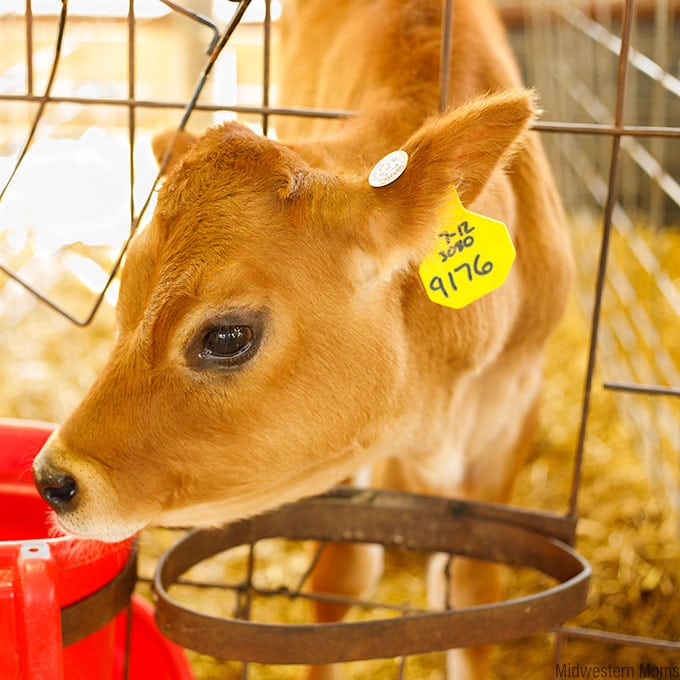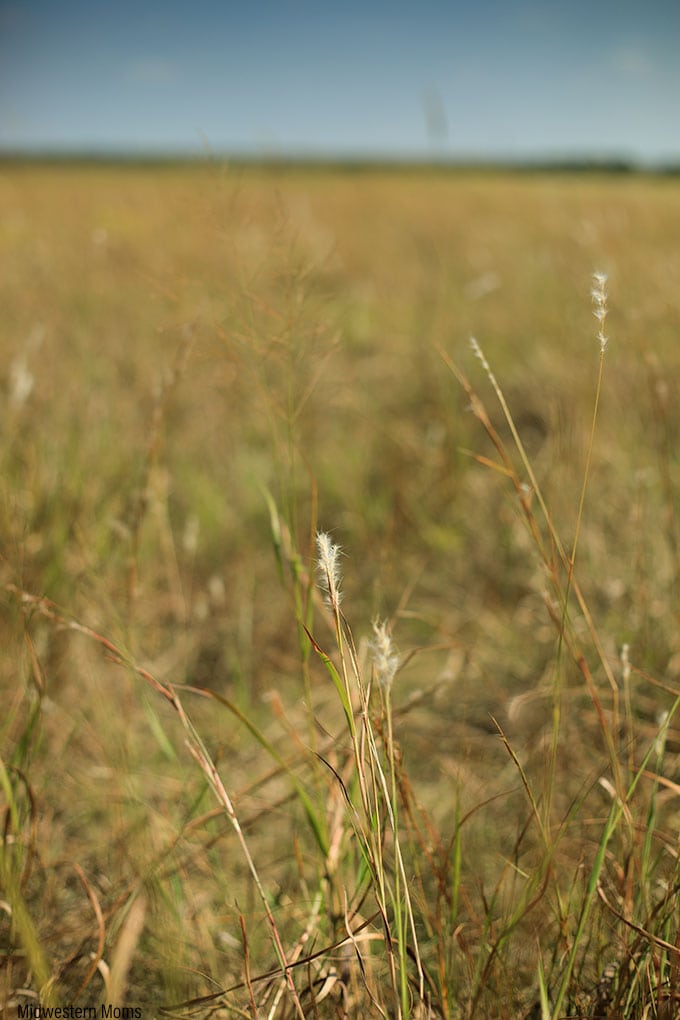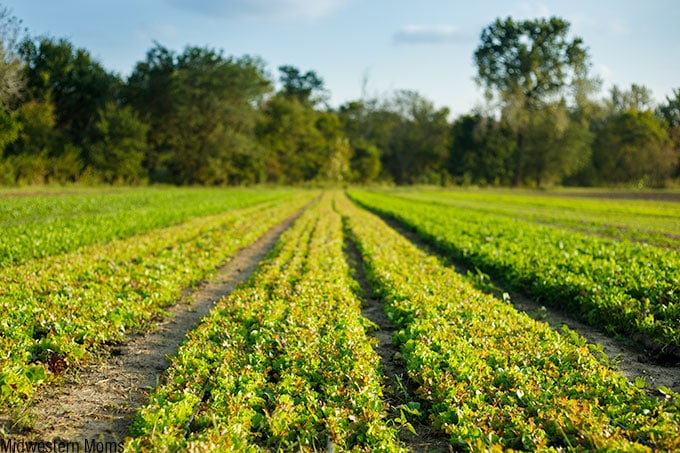My Farm Food Tour Through Kansas
This post may contain affiliate links. If you make a purchase through links on our site, we may earn a commission. As an Amazon Associate, I earn from qualifying purchases.
This post is sponsored by Kansas Farm Bureau and Kansas Soybean. All opinions are 100% my own.
About a week ago, I took off on a journey across Kansas with a few bloggers and the Kansas Farm Bureau and Kansas Soybean. Since I post recipes sometimes on this blog, I thought it would be neat to find out where our food comes from. I joined the Kansas Farm Food Tour to learn just that.
Living in rural Missouri, I see farms every day. I see the corn and soybeans fields as well as pastures with livestock. But I had no clue what it took to be a farmer.
On the Farm Food Tour, we got to meet many farm families. They were all gracious people and gladly invited us into their homes and lives. They wanted us to learn just where our food comes from, the hard work it takes to run a farm, and to openly ask questions about farming. They were open and honest with us – even when the questions were brought up about livestock reproduction. That’s right, we learned all about the “birds and the bees” with pigs and cattle.
Kansas Farm Food Tour Stops
1. Good Pork
The Good Farm is a small, open-air pig farm. Listening to Mr. Good talk about his pigs is inspiring. The love he has for his pigs radiates from him. His pigs are his passion.
It was very noticeable that he takes great care on how his pigs are taken care of.
Once the tour of the Good Farm was over, they opened up their house and we enjoyed a great lunch catered from the Little Apple Brewing Co. in Manhattan, KS. It was a very delicious meal, and yes it included pork from the Good Farm.
One thing I took from this visit was how easy pigs can get sick. We learned pigs can get diseases from humans! Since it was an open air farm – we did not have to shower before stepping foot on the farm. We were allowed to wear special blue booties over our shoes. Healthy pigs mean good quality meat for consumers.
2. Meier Dairy
I have to admit, getting your milk from the store, you don’t realize the hard work that goes into just getting that gallon. We learned at the Meier Dairy, how hard it is to find good help who want to work on a farm milking cows. Lets face it, it means getting up early and milking all the cows on the farm – hundreds of cows. Good help is hard to find and with out help, a dairy farm struggles.
When a dairy farm is not ready to give up, they turn to robots.
Mrs. Meier showed us what life on a dairy farm is like with robots (they were the first in Kansas)! They have both Jersey and Holstein cattle on their farm and all of them are milked by a robot.
The cows willingly go to get milked (we found out they enjoy it) when they want and they get a special treat while they are being milked. The special collars around their neck allows the robot to scan the cow’s information so it knows everything about them.
The process works pretty close to how it would be done by hand, except by a robot. It will clean the cow’s teat, dry it, attach the milkers (sorry not sure of the scientific word), and then afterwards it applies a lotion to the cow’s teat. We watched the whole process and it was very interesting. The cows didn’t mind one bit. We had to wait for the machine to clean it’s self and by the time it was open, there was a line waiting.
The milk is then transferred to a huge holding tank (which is chilled) until the milk truck comes at 4:30 in the morning to collect it. However, before the milk is collected. The driver runs tests on the milk. If it passes, it goes on to the plant where it is tested a second time. If the milk doesn’t pass, it is dumped out and not delivered. They do have a second holding tank for the milk so there is no down time while the driver is collecting the milk and the tank is cleaned.
It was also calving season on the farm. There were several calves that were brand new. They were so cute.
3. Holle Farm
Mrs. Holle joined us on our tour. It was great having a farmer on the whole tour with us to answer questions on the bus.
The Holle farm is like a farm I would envision. They have some crops, cattle and pigs, too. They were getting ready to plant wheat that day, so they had the tractor there with the planter and seed trailer behind it. When they plant wheat, they plant a blend of 4 different types of wheat so if one type doesn’t grow well, they have other seeds planted to fall back on.
We all got to sit inside the tractor and take a look at the technology that is inside the tractor. WOW! I can tell you their GPS systems are a million times better than Google maps. It can even assist them while driving in the field with their A/B lines that are programmed for each of their fields.
Farmers can gather so much information as well while they are working with everything they have at their fingertips.
While there we also fed a few of their cattle and got up close and personal with them. We even gave them a brush down. The cattle we met were show cattle the kids raised and took care of for their 4-H projects. You could tell they were used to the attention.
4. Innovative Livestock Services
Innovative Livestock is a feed lot. This company helps connect cattle farmers with processors that deliver the meat to consumers. They feed and care for cattle before they’re sent off to be processed.
5. Sawyer Farm
The Sawyer Farm was similar to the Holle Farm. However, they were in the middle of harvesting some soybeans!
The Sawyer’s son met us when we got there and handed out toy John Deere tractors – which the boys loved when I got home!
While talking to the Sawyer’s we learned about some of the hardships that farmers had during the ’80’s. A number of things happened including low commodity prices and very high interest rate. It was not a time to be a farmer, so many fell to financial hardships and eventually had to sell their farms.
We also went by their house where they are raising 2 calves that lost their mothers to a sickness. The calves were fine and so was the rest of the herd. They were adorable.
The Sawyers also had 4 horses. This was our first encounter with horses on this trip. We were able to feed them some corn. We gave them the corn on the cob, and they ate the corn right off. Just like how we would eat corn on the cob!
6. Ahlerich Farm
The Ahlerich Farm is very similar to the other farms we visited. Their home was right next to a soybean field and a beautiful river.
What made this farm stand out from the others was how close they lived to their fields. We had talked about farmers spraying fields and how little the chemical Roundup is actually used. We learned it is very minimal. Farmers mix between 15 ounces to 20 ounces with 10 gallons of water to cover 1 acre of land. In all reality, the crops are barely getting covered- just enough to take care of the bugs that would eat our food before we got to.
We also learned how careful they are of runoff, or chemicals and fertilizers “running off” after a rain into the river. Farmers are aware of their environment and they don’t want to harm it or us. Also, the chemicals spray lands on the ground is filtered out by the soil before it gets to the plants roots. So we are not consuming roundup in our food.
7. Dalebanks Angus
Have you ever wondered if cowboys were still around? Well, at the Dalebanks Angus Ranch, you will find just that. The ranch is located in the Flint Hills where prairie grass is found. It is a beautiful place.
It was calving season and the momma cows were very protective of their babies. This little calf was actually born that morning during our visit! It was only a few hours old by the time we got to see it.
Going back to the cowboy ways, on this ranch they do use horses to round up the cattle and move them where they need to be. This photo is of an older horse that does not work on the ranch as it is older and nearly blind. However, their daughter does take her to shows.
While on the ranch, we did learn the “birds and the bees” for cattle as well.
8. Juniper Hills Farm
Juniper Hills Farm is an organic farm with some conventional crops. This farm was started by a first-generation farmer! That means, this farmer started his farm on his own. It was not passed down to him from previous generations. So it is still possible for kids to grow up and be a farmer if they wish. Let them know it is possible.
Juniper Hills Farm had just planted different types of organic lettuce. They serve stores like Whole Foods in the Kansas City area. If you pick up organic lettuce, you may be eating some of Scotty’s Lettuce! How awesome is that!
We covered a lot of ground on this farm tour. There was SO much information packed in and it was great getting to see the farms!
I enjoyed learning about the how our food gets to our tables.
If you are looking for more information:
- Kansas Soybean – Learn all about soybeans!
- Kansas Living – great place for all things: things to do in Kansas, recipes, Kids activities and more! Psst: they also have a great newsletter!
- Kansas Farm Bureau
- Kansas Beef
- Kansas Farm Food Connection – Kansas ag organizations sharing consumer-friendly goodies like recipes, nutrition, farm facts, and more. Make sure to follow them on Facebook!
- Best Food Facts – A fun, consumer-friendly website that tackles some of the myths and questions people have on our food system. They have a fun, short monthly e-newsletter.




















